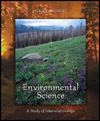 |  Environmental Science: A Study of Interrelationships, 8/e Eldon Enger,
Delta College
Bradley F. Smith,
Western Washington University
Air Quality Issues
Chapter ObjectivesAfter reading this chapter, you should be able to:
| Explain why air can accept and disperse significant amounts of pollutants. |
 |  |  | | List the major sources and effects of the five primary pollutants. |
 |  |  | | Describe how photochemical smog is formed and how it affects humans. |
 |  |  | | Explain how PCV valves, APC valves, catalytic converters, scrubbers, precipitators, filters, and changes in fuel types reduce air pollution. |
 |  |  | | Explain how acid rain is formed. |
 |  |  | | Understand that humans can alter the atmosphere in such a way that the climate may change. |
 |  |  | | Describe the link between chlorofluorocarbon use and ozone depletion. |
 |  |  | | Recognize that enclosed areas can trap air pollutants that are normally diluted in the atmosphere. |
|



 2002 McGraw-Hill Higher Education
2002 McGraw-Hill Higher Education